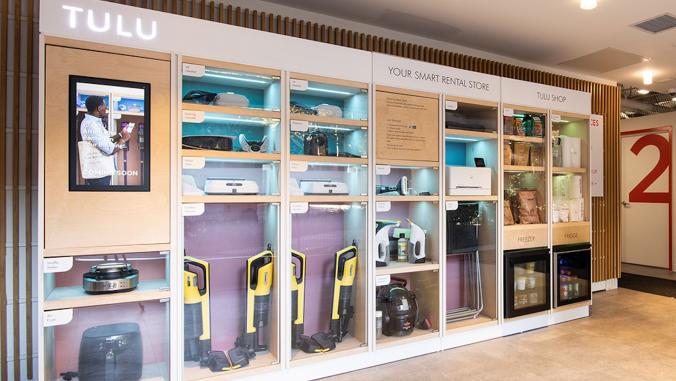There is no shortage of circular economy startups, products and services vying for funding, offering investment opportunities across every industry. On a global scale, there's a massive financial incentive to invest; Accenture estimates the economic potential of realizing a circular economy is $4.5 trillion.
The circular economy offers a model for a profitable and regenerative system, but intelligent investments are essential to advance circularity at scale. To learn more, I spoke with Bridget Croke, managing director at Closed Loop Partners (CLP), an investment firm accelerating the transition to the circular economy. Pioneers in the field, CLP has made over 65 investments, which it says have helped to keep 4.8 million tons of materials in circulation.
Croke, part of the founding team at CLP, has been instrumental in building its three verticals in investment, innovation and infrastructure over the past decade. She also advises on circular strategy to companies including P&G and Coca-Cola, to partner organizations such as the Ocean Plastics Leadership Network and to CLP venture portfolio companies including Algramo.
CLP’s portfolio company holdings include Molg, which uses robotics and design software to improves assembly and disassembly processes and maximize value from recovered materials; Solarcycle, whose platform facilitates the restoration, renewal and recycling of solar panels; and Thrilling, a boutique vintage clothing marketplace that digitizes inventory, providing resale channels at scale.
Kori Goldberg: What types of investments offer the biggest potential for advancing circularity at scale?
Bridget Croke: As we like to say, there is no one solution that is going to create a circular economy. The circular economy aims to solve system-wide challenges through holistic solutions, recognizing that there is no panacea that will affect systems change.
It relies on several strategies, some old and some new, that extend the lifespan of products and eliminate waste through reducing, reusing, recycling, renting, remanufacturing, refilling and redesigning products and materials. This shift in thinking impacts every part of the value chain and creates a framework for global corporations, startups, governments and cities to reimagine capitalism, reduce costs, increase efficiency and protect the environment we share.
This is why we invest in companies that advance direct impact toward the circular economy by focusing on a given material stream and helping make it more circular to eliminate waste, like MRFs [materials recovery facilities] or material processors.
Focus on the fundamentals: running a profitable business, building a great team and creating something with market demand.
However, because supply chains are interconnected, often we need enabling solutions to unlock catalytic impact, such as transparency tools, logistical solutions or technology platforms that create indirect impact and help companies advance more direct impact.
Goldberg: What are the gaps or roadblocks to more companies adopting circular economy practices or business models? What do investors need to accelerate investments in the circular economy?
Croke: Our goal is to help build the systems that de-risk circular investments for companies and traditional investors. For example, we need to invest in the infrastructure and enabling technologies that can support companies in their internal investments in the circular transition, such as design changes, new packaging formats and new business models.
For investors, we need consistent demand signals from brands and their largest manufacturers, where commitments to sustainability are backed by dollars and transparently adhered to within their supply chains. Offtake agreements, demand signals and contracts from brands can help reduce their risk of investments. Catalytic capital can also help ensure that investments from others in the capital stack are hitting the necessary return profile.
It is also ultimately important to show that the circular transition works for consumers and offers an equal or better experience.
Goldberg: How do you address the "chicken or the egg" dilemma of circularity needing to be profitable to be pursued, yet circularity at scale not being justified until circular ventures prove profitable?
Croke: Change does not happen overnight; advancing the circular economy requires multiple solutions to make incremental progress toward systems-level change and mitigate unintended consequences.
To make steps toward scale, there is a critical need for experimentation — that's why our Center for the Circular Economy focuses on partnerships with consortiums of major brands and testing solutions in market to help determine the potential for scalability. Testing and iteration help make scale possible and helps limit unintended consequences.
We also need to invest in companies at different points in their growth curve; Closed Loop Partners invests across different asset classes to meet the needs of companies at various stages of development including early stage, growth companies and profitable middle market companies.
Finally, we need to build the infrastructure to support companies advancing the circular transition; Closed Loop Partners’ operating group, Circular Services, is helping build the circular infrastructure needed.
To make steps toward scale, there is a critical need for experimentation.
As we advance our work, we aim to influence and support our corporate partners to participate in this transition. To get to a profitable state for the circular economy, companies need to sometimes pay more now to reach the economies of scale that create price parity.
Goldberg: Many investors have clear carbon and climate goals, but not necessarily specific circularity goals. Are any investors currently tying circularity goals to their climate goals? How? What metrics or KPIs are being used?
Croke: We are seeing climate and circular economy goals starting to merge. Most of our investors have climate as a priority, and we know that the circular economy is an important solution to addressing the climate crisis.
Up to 70 percent of greenhouse gas emissions are connected with the products we make and consume every day. This is where climate intersects with the circular economy. By keeping goods and resources in play (for longer, at their highest value), we reduce the need for extraction and landfilling — two major sources of emissions.
That said, when circular solutions don’t align with climate goals, we need to rethink the solutions so they do align. For example, if a brand offers reusable packaging but the packaging is not cycled enough to offset the additional material used for durability, the climate outcome could be worse. We need to make sure solutions work in theory and in practice to solve for climate and waste.
Our two main KPIs to measure the impact of our investments are greenhouse gas emissions avoided and materials kept in circulation.
Goldberg: What advice would you give to circular startups or companies with circular projects who are trying to attract capital?
Croke: Focus on the fundamentals: running a profitable business, building a great team and creating something with market demand. Additionally, circular businesses frequently need to be logistics businesses, moving materials to and from the market. It’s important not just to consider the cost of the technology, but also to consider the cost of moving materials.






